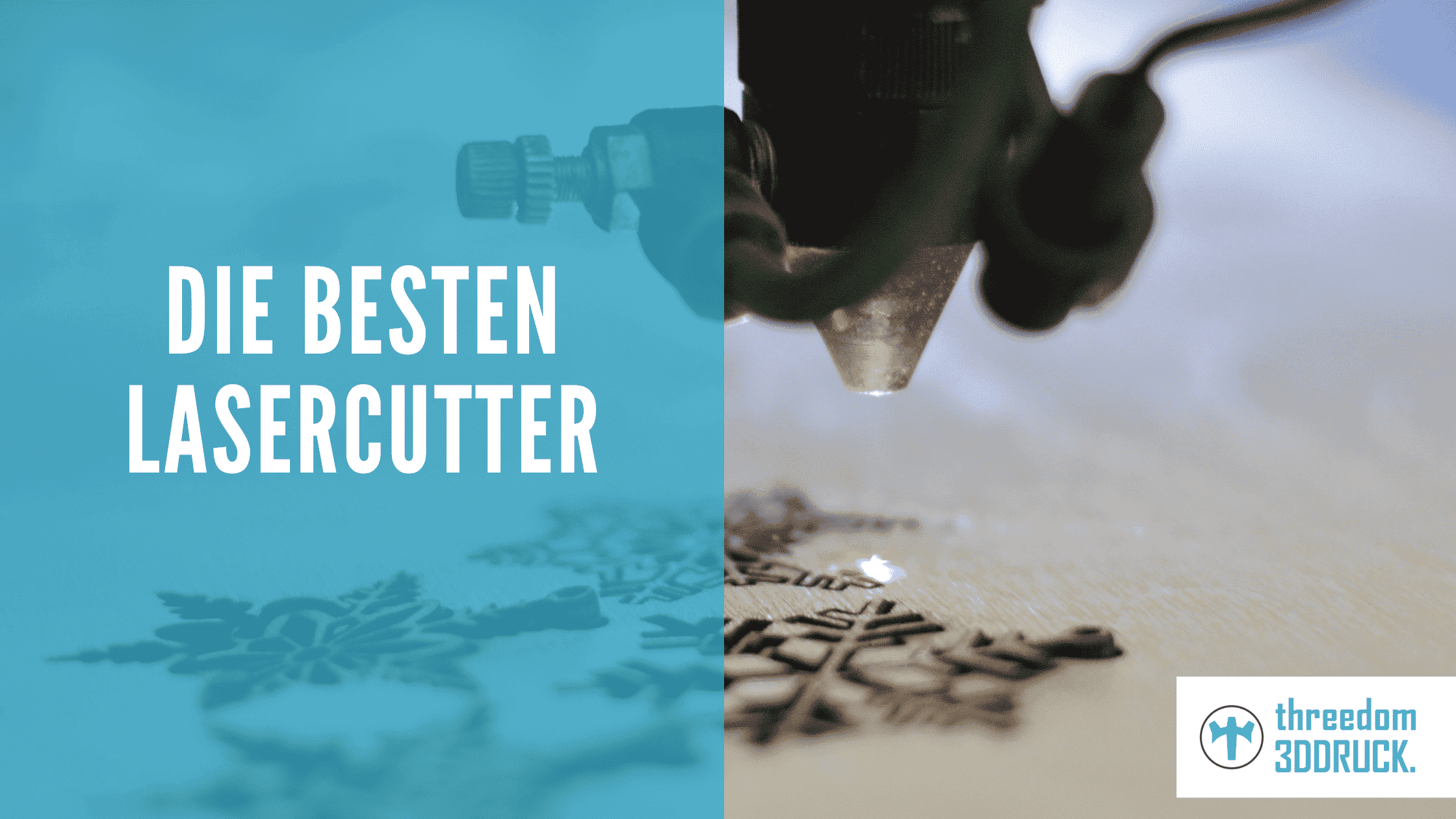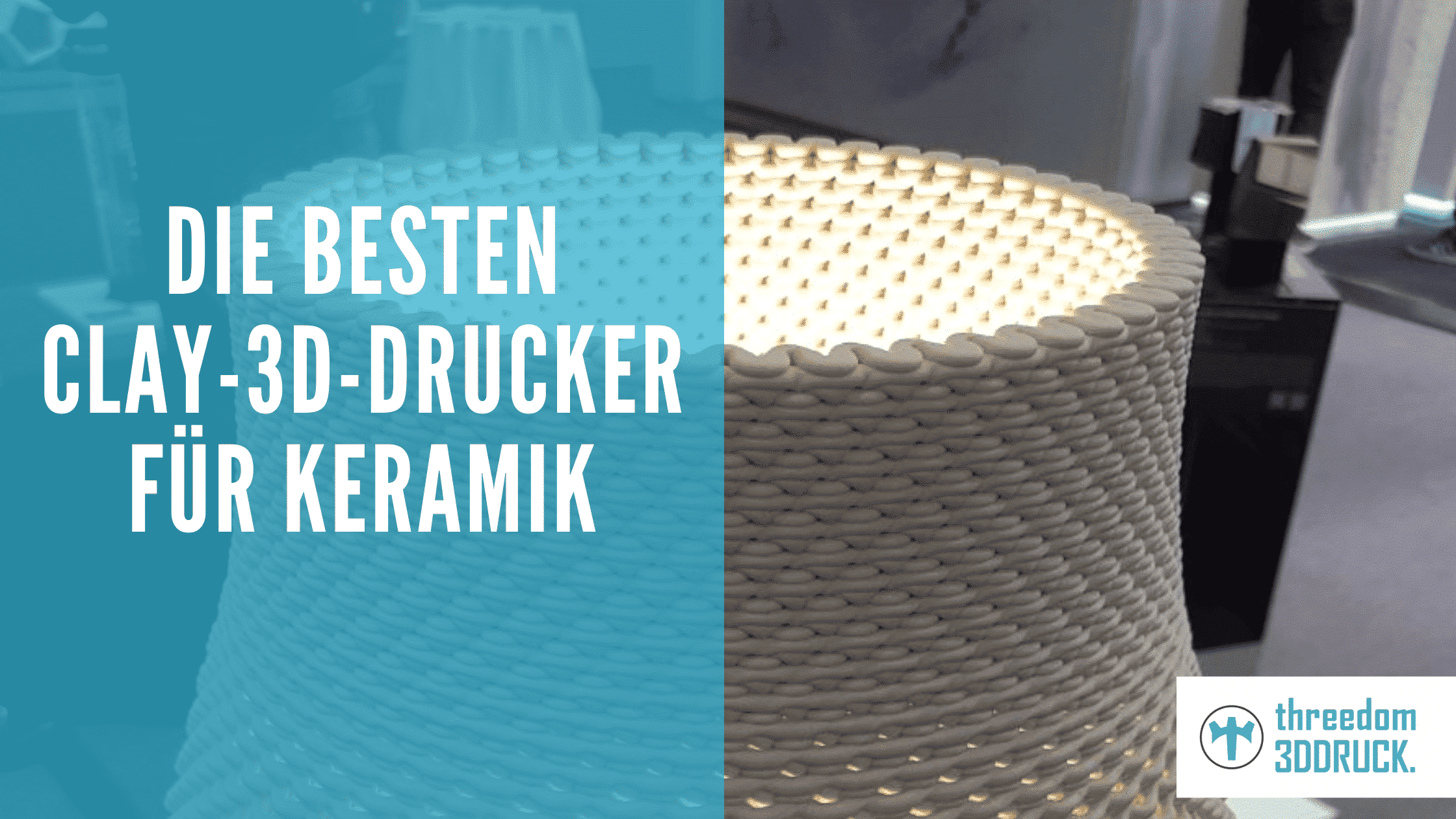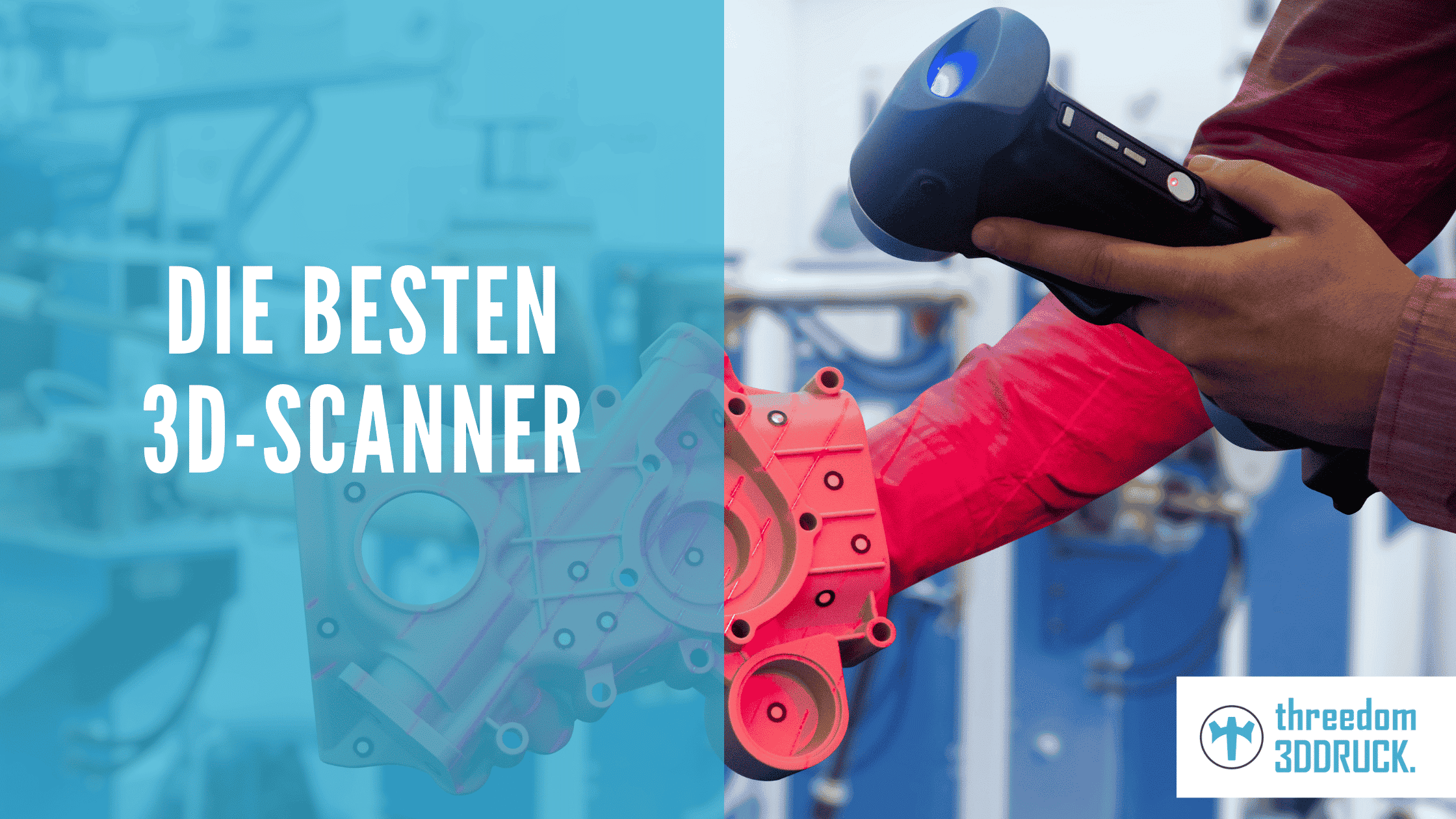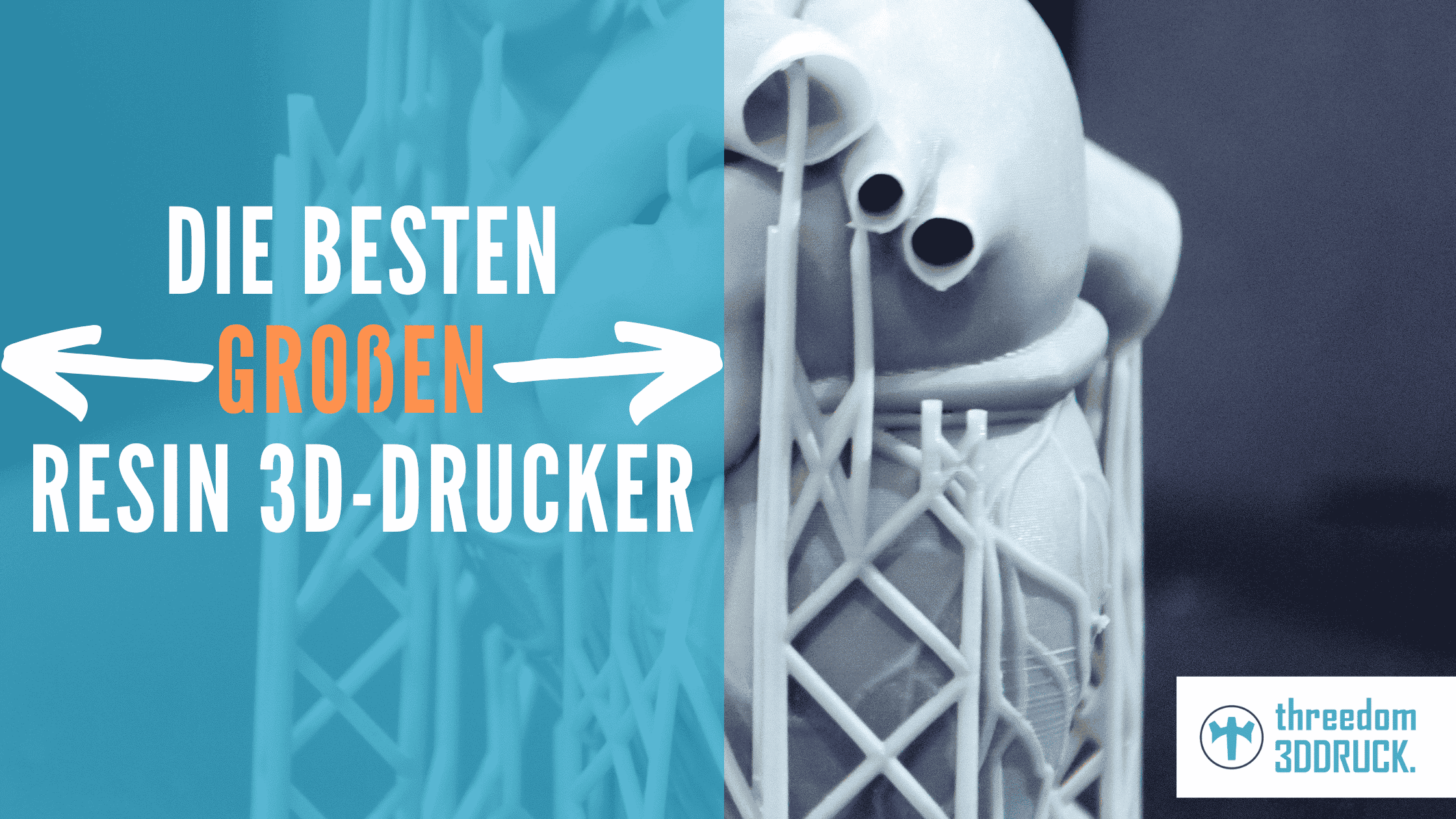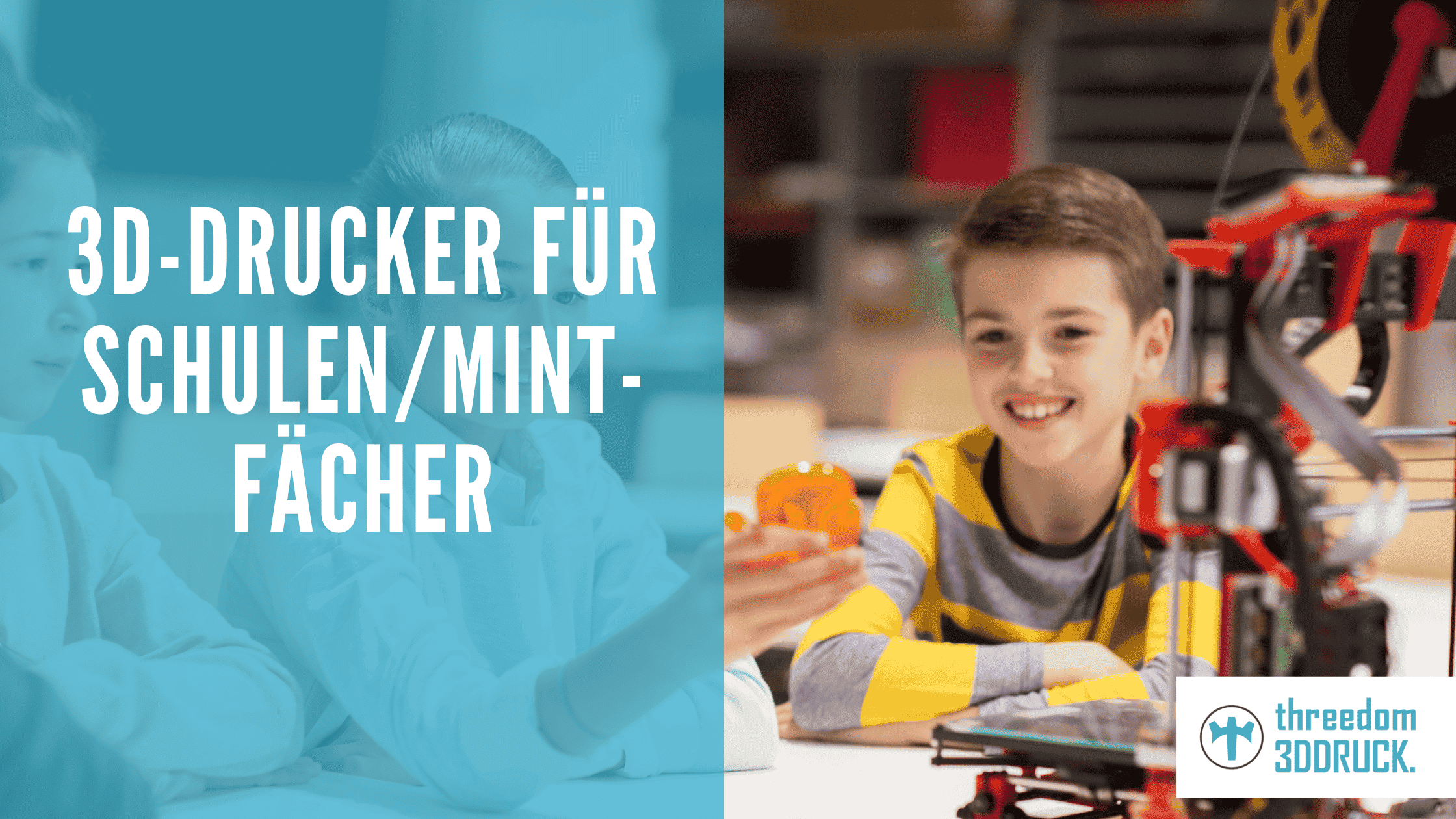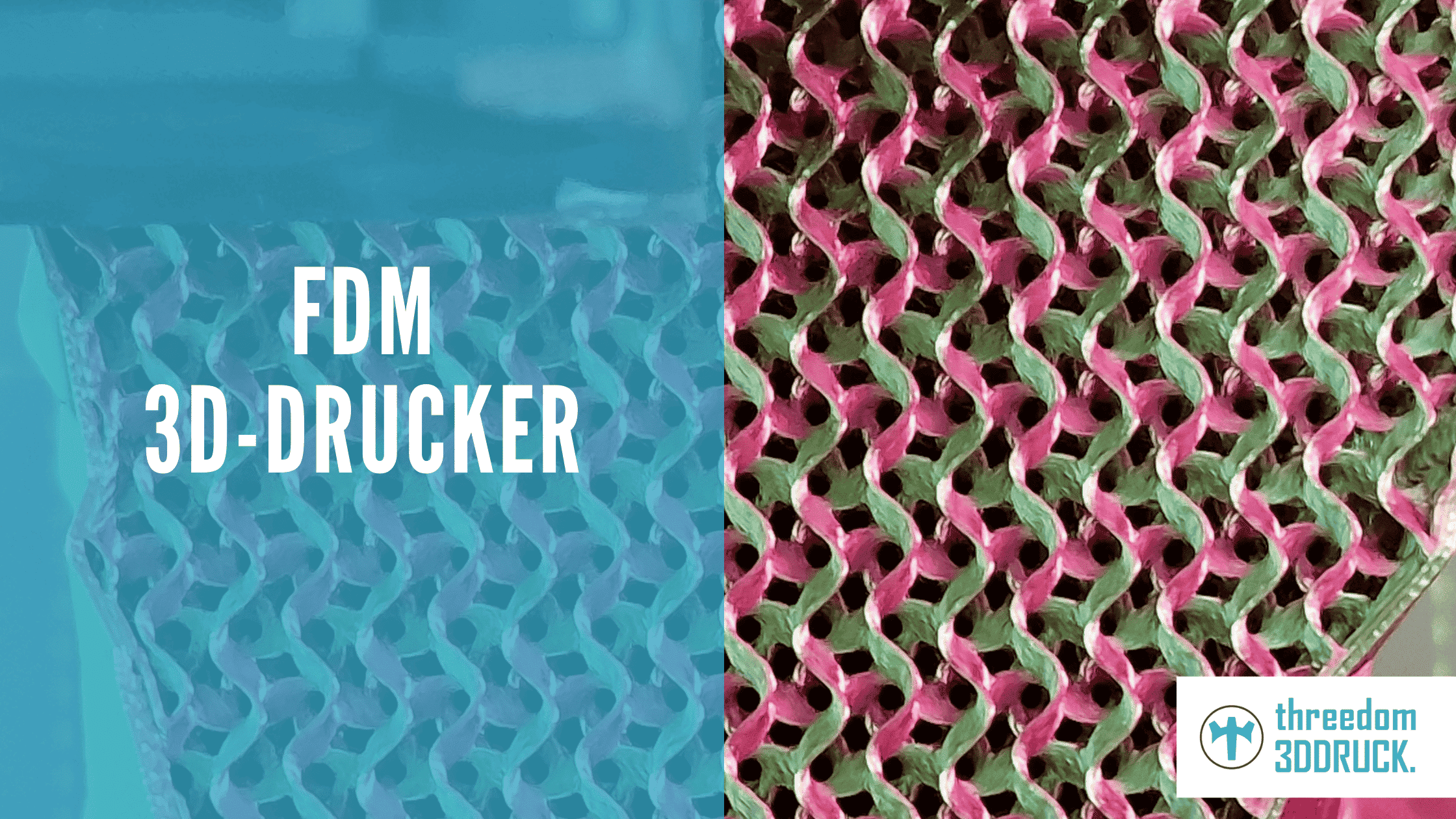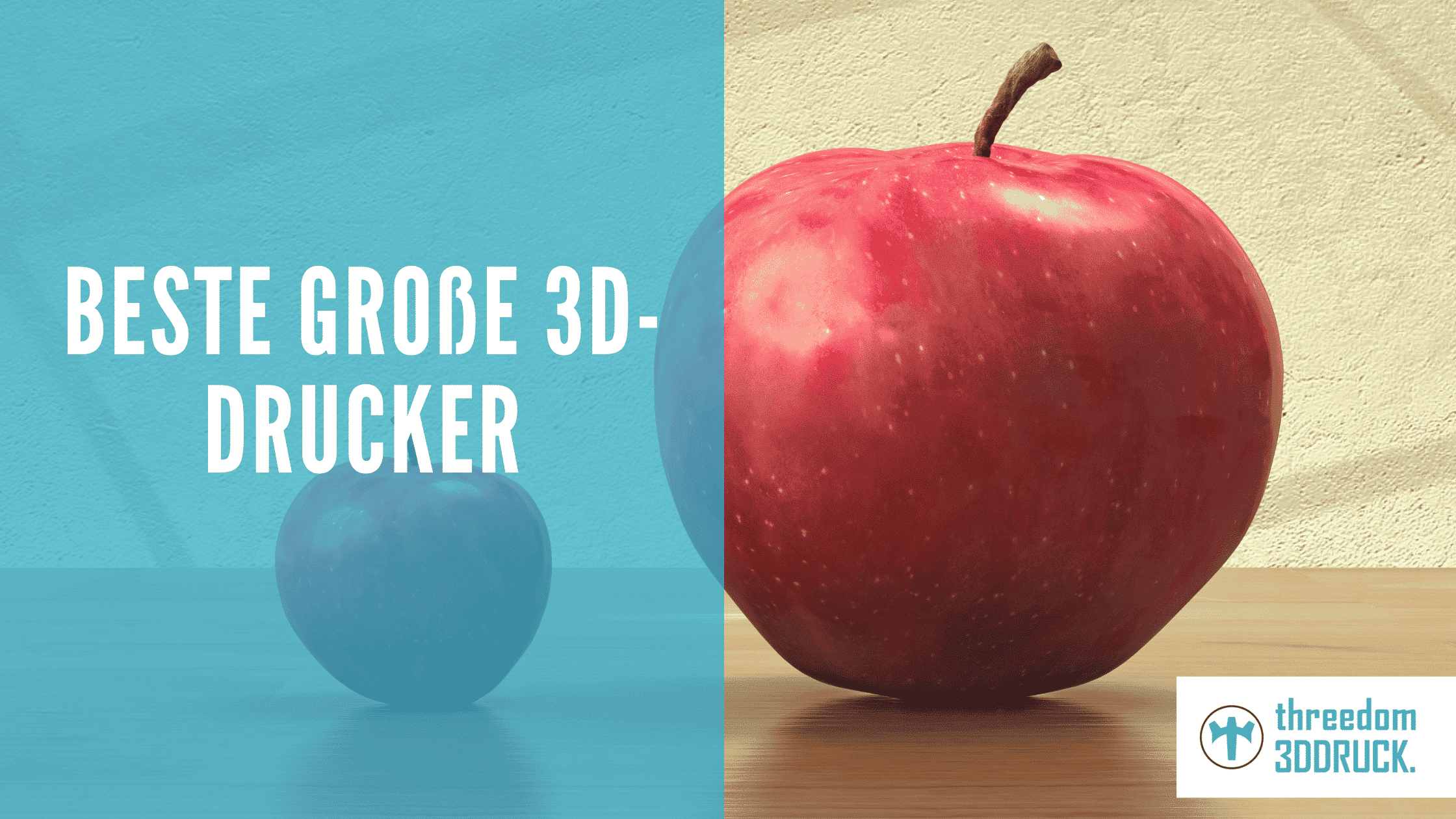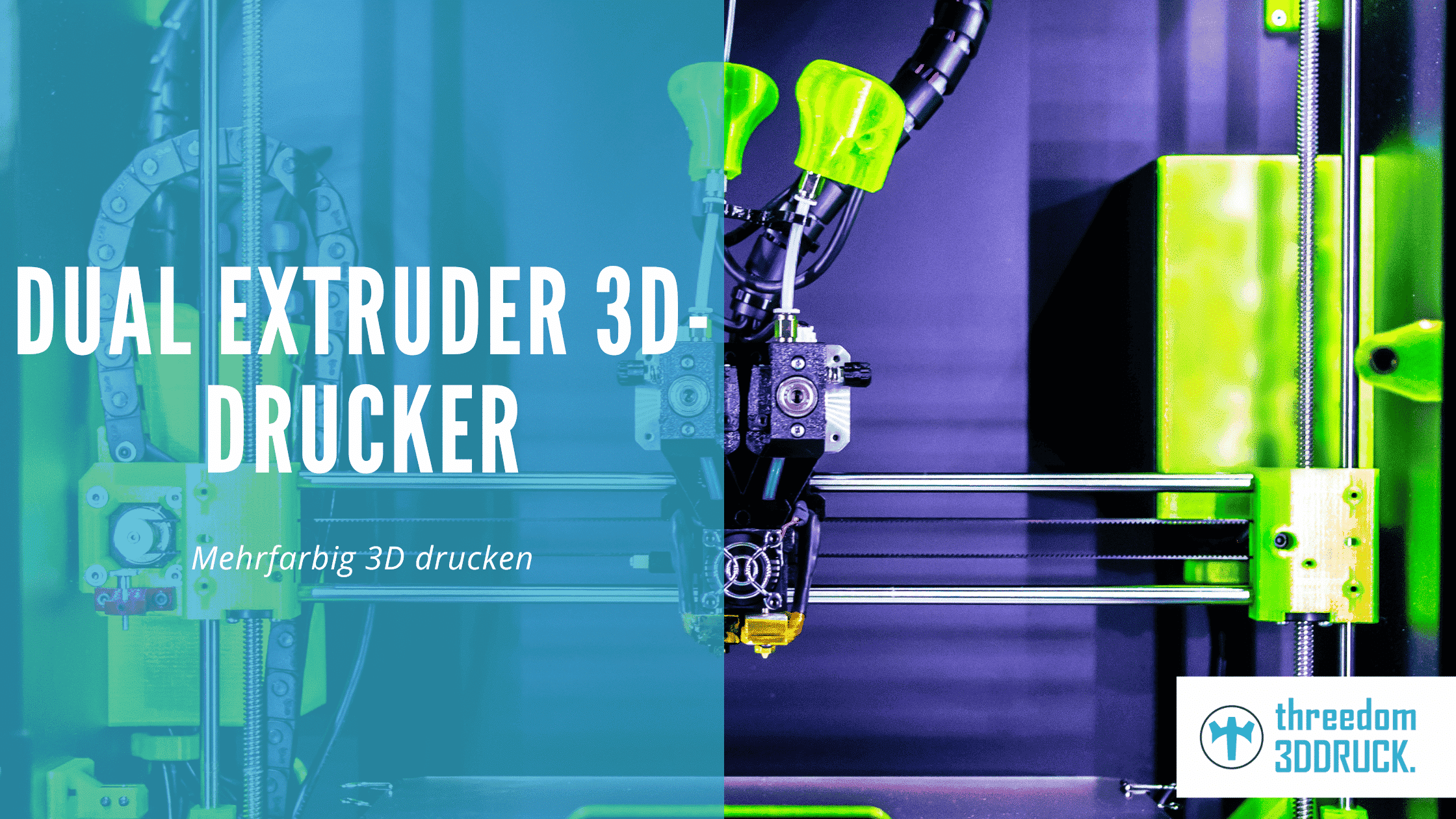The Best 3D Printers With Auto Bed Leveling 2024
Auto-bed leveling has long been an extra that 3D printing fans had to dig deep into their pockets for. In the meantime, this has become established as the standard – and has opened up significantly more possibilities for users. The selection has grown, but the price has fallen in some cases. We have therefore taken a close look for you and present the best 3D printers with auto-bed leveling below.
The most important in a nutshell
- 3D Drucker mit Auto-Bed-Leveling gab es lange Zeit nur in oberen Preisklassen
- Mittlerweile ist die automatische Bettnivellierung in vielen Fällen Standard und auch bei preisgünstigen Geräten zu finden
- Geräte für Anfänger ist das Auto-Bed-Leveling ein nützliches und komfortables Extra, welches die Bedienung deutlich vereinfacht
- Für die Suche nach dem besten 3D Drucker mit Auto-Bed-Leveling kannst du auf unser Ranking zurückgreifen
The best 3D printers with auto bed leveling
The choice of self-leveling 3D printers is now wide. That doesn't always necessarily make it easy to find the right choice. We have therefore listed the current best 3D printers with auto-bed leveling for you below.
| Place | Name | Manufacturer | Installation space | Print resolution | Special features | approx. price | To the shop* |
|---|---|---|---|---|---|---|---|
| 1 | i3 MK3S+ | Prusa Research | 25 x 21 x 21 cm | 0.35 mm | Wide range of supported materials, SuperPINDA sensor for ABL, removable pressure plates, resumption in case of power failure. | 849 € | Click |
| 2 | Ender 3 S1 | Creality | 22 x 22 x 27 cm | 0.10 mm | Heated build plate, interfaces for laser engraving and LED light, dual Z-axis for more stability, user-friendly interface. | 395 € | Click |
| 3 | GeniusPro | Artillery | 22 x 22 x 25 cm | 0.35 mm | Titanium extruder, heated build plate (up to 120 degrees), automatic resumption of printing, alarm message in case of leaking filament, quiet printing process. | 329 € | Click |
| 4 | Mini+ | Prusa Research | 18 x 18 x 18 cm | 0,25 mm | Replaceable nozzles, SuperPINDA sensor for ABL, USB printing, full-color LCD display, network connection | 489 € | Click |
| 5 | Vyper | Anycubic | 24,5 x 24,5 x 26 cm | k. A. | Heated heating bed (up to 110 degrees), magnetic spring steel printing plate, compatible with many filaments, large build volume, automatic resumption of printing. | 319 € | Click |
| 6 | S3 | Ultimaker | 23 x 19 x 20 cm | 0.60 mm | Closable front screen, intelligent filament sensors, intuitive operation, additional service package available on request, integrated webcam for monitoring the printing process | 4.700 € | Click |
| 7 | Cobra | Anycubic | 22 x 22 x 25 cm | k. A. | high printing speed, heatable spring steel print bed, easy operation | 279 € | Click |
The best 3D printer with Auto Bed Leveling: Prusa i3 MK3S+
The best 3D printer with Auto Bed Leveling is currently the i3 MK3S+ from Prusa Research. The printer comes with an installation space of 25 x 21 x 21 cm and thus offers sufficient space for small and medium-sized objects. The printer is compatible with many different filaments with a diameter of 1.75mm, in addition, the SuperPINDA sensor ensures the greatest accuracy in auto-bed leveling. The removable printing plates or the automatic resumption of printing after a power failure are also convincing.
General info
- Name: i3 MK3S+
- Hersteller: Prusa Research
- Bauraum (L x B x H in mm): 250 x 210 x 210
- Maximale Druckauflösung (Mikrometer): 35
- Besonderheiten: Große Auswahl an unterstützten Materialien, SuperPINDA Sensor für ABL, abnehmbare Druckbleche, Wiederaufnahme bei Stromausfall
- Vorteile: großer Bauraum, Slicen mit PrusaSlicer, Heizbett bis zu 120 Grad, Düsentemperatur bis zu 300 Grad
- Nachteile: Usability könnte höher sein, hoher Preis
The best cheapest 3D printer with bed leveling: Anycubic Kobra
You can find a solid 3D printer with bed leveling at a reasonable price with the Kobra Anycubic. The price difference results mainly from the materials used in construction, but less from the capabilities and performance. The printing speed is high, and the print bed can be conveniently heated up to 100 degrees Celsius. In addition, the printer is characterized by ease of use, making it the best cheapest 3D printer with bed leveling, especially for beginners.
General info
- Name: Kobra
- Hersteller: Anycubic
- Bauraum (L x B x H in mm): 220 x 220 x 250
- Maximale Druckauflösung (Mikrometer):
- Besonderheiten: hohe Druckgeschwindigkeit, beheizbares Druckbett aus Federstahl, einfache Bedienung
- Vorteile: Intelligente Auto-Nivellierung, mit vielen Materialien kompatibel, geringes Gewicht, niedriger Preis
- Nachteile: Komponenten könnten hochwertiger sein, MicroSD für Übertragung des Drucks veraltet
The Best Premium 3D Printer with Auto Bed Leveling: Ultimaker S3
If you'd rather go for a premium device, we can recommend the Ultimaker S3. With this printer, you can count on a high maximum print resolution and enjoy access to some interesting benefits. An integrated webcam is available, which informs you about the printing process at any time. In addition, the device uses intelligent filament sensors that pause the printing process in the event of a lack of material supply. The user-friendliness is high, the operation consequently simple. A real high-end device.
General info
- Name: S3
- Hersteller: Ultimaker
- Bauraum (L x B x H in mm): 230 x 190 x 200
- Maximale Druckauflösung (Mikrometer): 60
- Besonderheiten: Schließbare Frontscheibe, intuitive Bedienung, zusätzliches Service-Paket auf Wunsch verfügbar
- Vorteile: integrierte Webcam für Kontrolle des Druckvorgangs, intelligente Filamentsensoren
- Nachteile: hoher Preis
What is Auto Bed Leveling?
Auto bed leveling (ABL) is a process that has become increasingly established in 3D printing in recent years. This helpful extra prevents you from having to constantly realign your print bed. Auto bed leveling is therefore the exact opposite of manual bed leveling, where this alignment is always performed “by hand”. Auto-bed leveling thus makes it possible to compensate for printing plates that are not exactly perpendicular to the X or Z axis or are uneven.
How does Auto Bed Leveling work?
In auto-bed leveling, the 3D printers use fine sensors. These are there to measure the distance to the base plate at various points to detect irregularities. Once these have been detected, the floor slab is selectively raised or lowered at various points to compensate for the irregularities. Without this self-leveling, it could happen that the object is not only printed crooked. Print bed adhesion can also suffer significantly. Likewise, the printhead may be damaged by scraping across the base plate.
Sensor types for bed leveling
Depending on the printer and manufacturer, different sensor types are used in the ABL. We would like to present the different sensor types to you here.
Piezo
Piezoelectric sensors are completely called piezoelectric sensors and work with the so-called piezoelectric effect. These sensors are used in many different areas, such as quality and process control or 3D printing.
Infrared
Optical sensor types such as infrared sensors are also used in the ABL. These sensors detect the amount of light reflected from the approaching surface. The advantage here is the accuracy, which also ensures very precise repeatable results. However, there is also a small disadvantage, because on very bright or white surfaces, these sensors can sometimes quickly reach their limits.
Capacitive
Capacitive sensors are mainly suitable for “cooperation” with glass plates, but can be used with all surfaces. The sensors determine the density of approaching objects and react accordingly. Price-wise, the capacitive sensors are rather on a low level, which makes them a popular solution also for DIY printers. In addition, the capacitive sensors have a high repeatability.
Inductive
Inductive sensors are a common and inexpensive solution for car leveling on the 3D printer. These sensors react to the approach to the metal, which can be found in the aluminum pressure bed, for example. As a rule, the inductive sensors work very precisely and reliably, moreover, they are characterized by a high accuracy in the repetitions. However, if frequently changing printing plates are used, accurate auto-leveling is no longer possible with a glass plate, for example.
Hall sensor
Hall sensors use the so-called Hall effect to detect magnetic fields. These sensors consist of very thin semiconductor layers connected with several electrodes. This technique is also already known from many other areas. For a long time, Hall sensors were found in computer keyboards, for example. In addition, these are widely used in the automotive industry.
BLTouch
The BLTouch is a mechanical sensor that basically works with touch. The bottom line is that this is a very simple solution, but one that is enormously widespread. Similar to the capacitive sensors, the BLTouch can be used with all surfaces. A fine pin can be lowered and raised here with a magnetic coil. In this way, the distance to the print bed is “felt” at all times. The sensors usually achieve decent and repeatable results. However, the build quality could be a bit better.
3D printer with automatic bed leveling: selection criteria
To find the best 3D printer with automatic bed leveling, you should look at and compare different criteria. In the following, we will familiarize you with these selection criteria in more detail and show you what to look out for.
Simple control and handling
Especially as a newcomer, you should make sure that your printer is characterized by a high level of user-friendliness. This can be promoted, for example, by the user interface on the screen. But also because you can easily control and customize the ABL systems. As a rule, the more complex the operation, the less suitable a device for the beginners.
Price/Performance
You don't have to shell out a fortune for your passion these days. Prices for 3D printers have dropped significantly in recent years. Fortunately, performance has often improved significantly in the same breath. Nevertheless, you should pay attention to an overall coherent price-performance ratio. We advise you not to buy too “cheap” in any case, but to look for good deals. If you buy cheap, you run the risk of having to buy replacement parts frequently or even quickly get a new printer.
Maintenance and spare parts
This brings us to the next important criterion. The maintenance and spare parts. Not always the maintenance of the device is equally simple. Additionally, you may not be able to easily get replacement parts for certain models. So even before your purchase, you should look into where you can get new parts in case of an emergency. If you don't find them, a lot of frustration and disappointment will quickly set in.
Heating bed available and removable
A heating bed should definitely be included with your 3D printer. This is true even if it is a particularly low-priced variant. On the one hand, you should ensure that the temperature is as high as possible. At best, this should be able to reach values of at least 100 degrees Celsius. In addition, it helps if you can remove the heating bed. On the one hand, this facilitates the change, but also the cleaning at the same time.
Large and helpful community
As a European or German 3D printing fan, you can't always rely on a manufacturer's intensive and easily accessible customer service. It is therefore important that your printer has an established, large and helpful community. With the help of various forums, you can find out about important news, get tips and advice, or ask questions.
Who are Auto Leveling 3D printers suitable for?
Auto-leveling 3D printers are especially good for beginners who want to start printing without a lot of prep work if possible. You save on adjusting the distance between the nozzle and the heating bed and thus a lot of time, not only in the long run. Especially for newcomers, this process is often frustrating.
The ABL printers are less suitable if you place a high value on technical understanding or like to “tinker” with your 3D printer yourself. In this case, manual leveling will probably be more of an entertainment for you, which is why you can then do without the ABL systems.
Advantages and disadvantages of auto-bed leveling
Auto-bed leveling brings both advantages and disadvantages. However, the advantages should outweigh the disadvantages, especially for newcomers. Manual leveling of the print bed can be a real challenge for beginners. You can simply save this time and effort with the ABL. Furthermore, you don't have to reconfigure the build area extensively every time after a print, but can adjust it conveniently and quickly.
Among the disadvantages is that you don't develop a technical understanding of your printer yourself. So should you be a hobbyist and tinkerer, you will probably want to do without the ABL. Still this is also at least a small price issue. If you want to buy a used device at a particularly low price, you will be able to do so at a much lower price without ABL. Furthermore, the printhead is additionally loaded by the sensors for self-leveling. If you reach for a DIY kit or a kit, it may also prove to be a bit more cumbersome due to the ABL system.
Advantages
- Einfache Anpassungen der Baufläche möglich
- Präzises Druckergebnis
- Höhere Bequemlichkeit und Zeitersparnis
- Gut geeignet für Anfänger und 3D-Druck-Neulinge
Disadvantages
- Zusammenbau eines ABL-Druckerkits etwas umständlicher
- Zusätzliche Belastung des Druckkopfes durch die ABL-Sensoren möglich
- Keine technischen Berührungspunkte mit dem eigenen Gerät (nicht für Bastler)
Conclusion: ABL as a convenient extra
3D printers with auto-bed leveling offer a noticeable advantage in the area of comfort. You save a lot of time because you don't have to manually adjust your print bed. The ABL systems adjust the distance between the nozzle and the print bed depending on the determined distance. There are plenty of differences between the systems, so they may be an important factor when buying. In addition, you can also retrofit the automatic leveling system.
Frequently Asked Questions Beginner 3D Printers
Feel free to send me beginner questions about 3D printers and I'll answer them here for everyone.
More buying guides:

